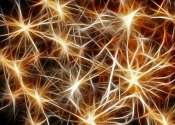Osteoporosis prevalence at femur neck, lumbar spine 12.3 percent
(HealthDay)—The age-adjusted prevalence of osteoporosis at either the femur neck or lumbar spine or both was 12.6 percent among adults aged 50 years and older in 2017 to 2018, according to a March data brief published by ...
Mar 31, 2021
0
2








